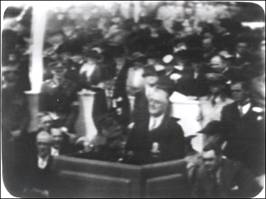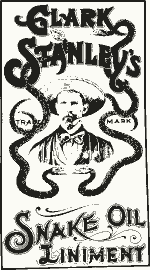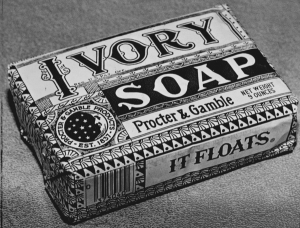How It All Began – the birth of visual communication
While radio was marking its place in American households, inventors were attempting to transfer a radio broadcast into an image based media. San Francisco was the home to the first image-based media in 1927. The SF History Center provides us with a little insight in Philo T Farnsworth and his television. At 14 he envisioned a television screen as lines of a picture that when pieced together would form a visual image. For the next seven years he would think of nothing else. He finally found small financial backing and then the real work began. He knew he had succeeded when he was able to transfer an image from one room to the other; however, he was a long way from a product that was actually marketable. Unfortunately Farnsworth would not financially benefit from his idea. It wasn’t until 2002 that he was finally recognized as “the inventor of electric television.”
Now that America had an actual television, it needed a television station. In 1928, W3XK was aired in Washington, DC. It wasn’t until 1932 that the station had regular programming. Television manufacturers were a long way from selling their product to households. It was one thing to have a product and a station from which programs could be aired, and another to make the product affordable for American households. GE designed a television with a three inch screen and had every intention to make it available to the public. They quickly changed their minds realizing America could not afford their sets and it was just not to the quality the company wanted to be branded for. Companies and individuals spent the next 10 years trying to get the design right and affordable for America.
At the 1939 New York World’s Fair President Franklin Roosevelt made a live broadcast from NBC’s station (W2XBS).  The next few years CBS, WNBC, and WCBS would follow suit. By 1946 the war is over, and six television stations are regularly on air, with more to follow. Looks like America has another viral media on its hands. After the war, American television exploded. News broadcasts occurred daily, sitcoms and cartoons were taped and aired almost immediately. There was a new advertising media in America and businesses wanted their piece of it. The first legal television commercial occurred in July 1941 for Bulova watches. Bulova paid $9 for its 10 second commercial.
The next few years CBS, WNBC, and WCBS would follow suit. By 1946 the war is over, and six television stations are regularly on air, with more to follow. Looks like America has another viral media on its hands. After the war, American television exploded. News broadcasts occurred daily, sitcoms and cartoons were taped and aired almost immediately. There was a new advertising media in America and businesses wanted their piece of it. The first legal television commercial occurred in July 1941 for Bulova watches. Bulova paid $9 for its 10 second commercial.
Like radio, television shaped the way American businesses communicated to consumers. By the 1950s two-thirds of America’s households had a television. Families referenced the TV Guide looking for their favorite program. The relationship between TV Guide and the television is a perfect example of print advertising and electronic media working together to build company branding.


 Now that printing on paper was a necessity and becoming common practice, P&G took a gamble and printed a simple design on white paper and began packing their product for mass usage. The majority of the $11,000 was spent on product packaging. The gamble paid off.
Now that printing on paper was a necessity and becoming common practice, P&G took a gamble and printed a simple design on white paper and began packing their product for mass usage. The majority of the $11,000 was spent on product packaging. The gamble paid off.